site search
online catalog
RARE CONFEDERATE GOVERNMENT IMPORTED KERR SNIPER'S RIFLE

Hover to zoom

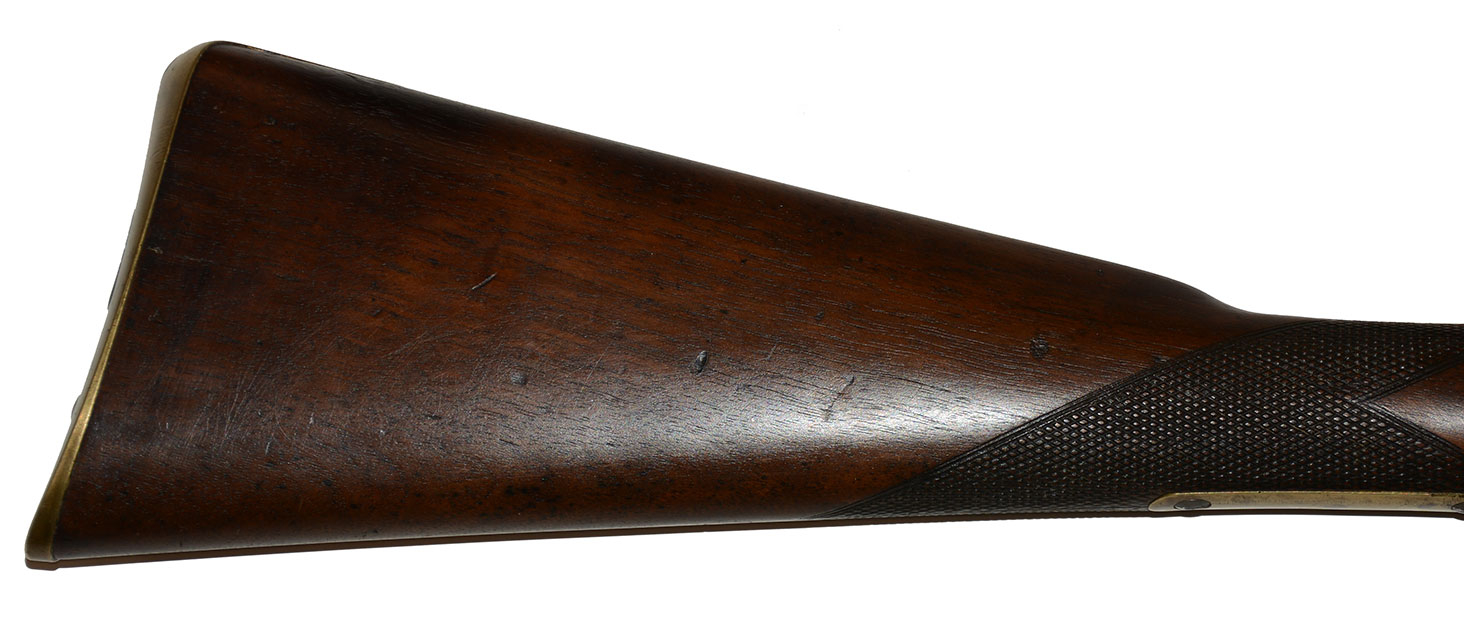


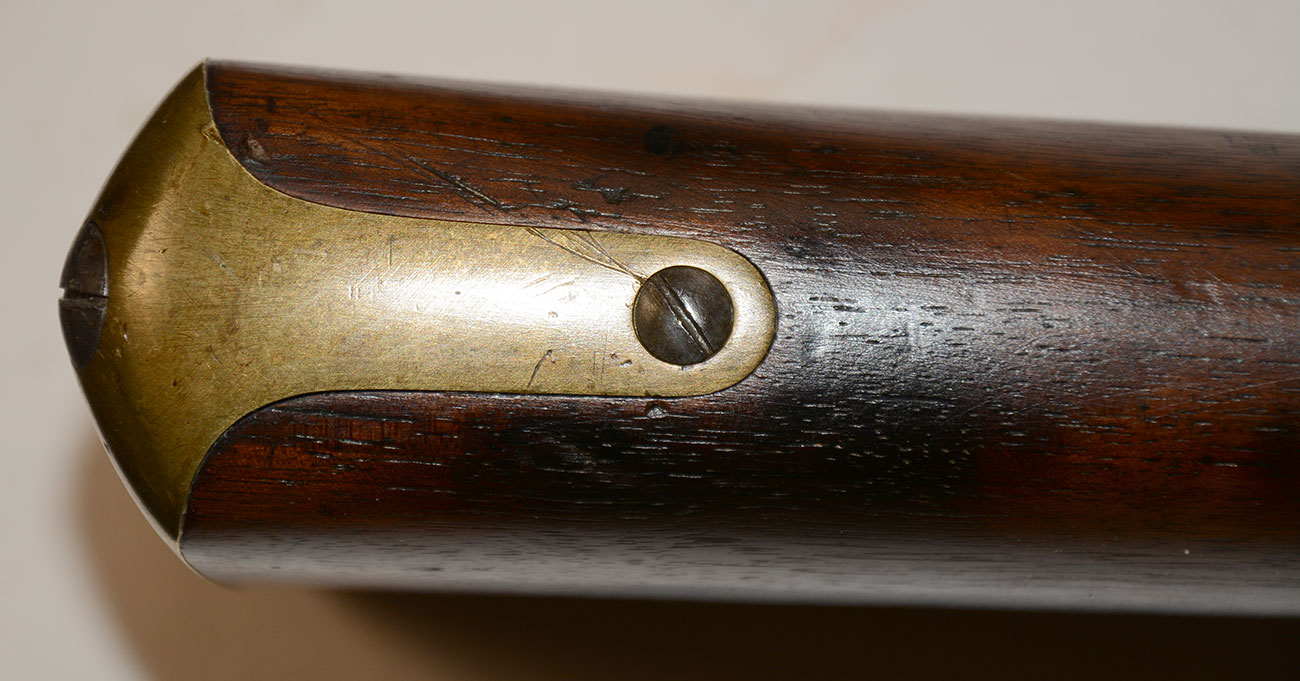
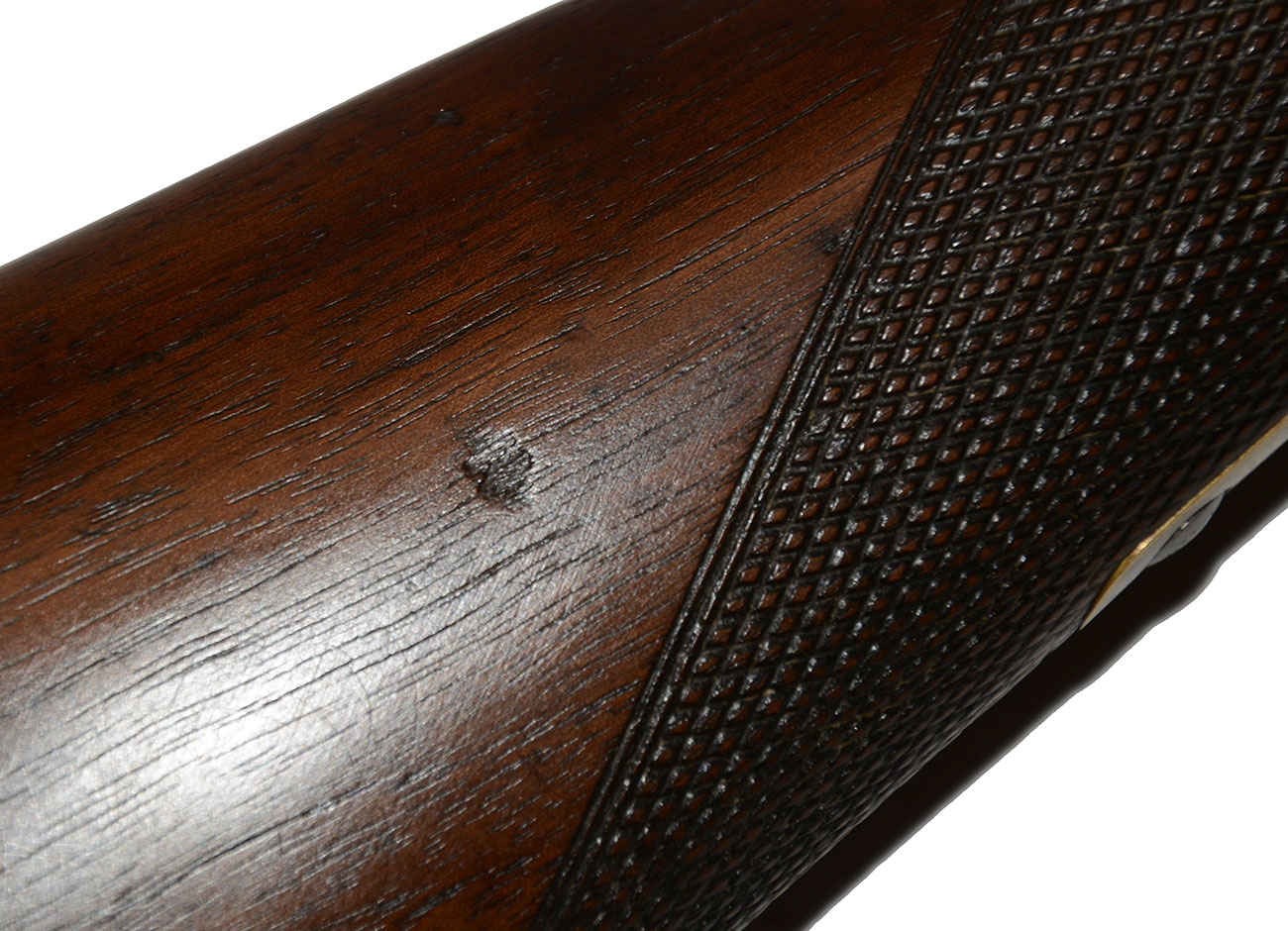
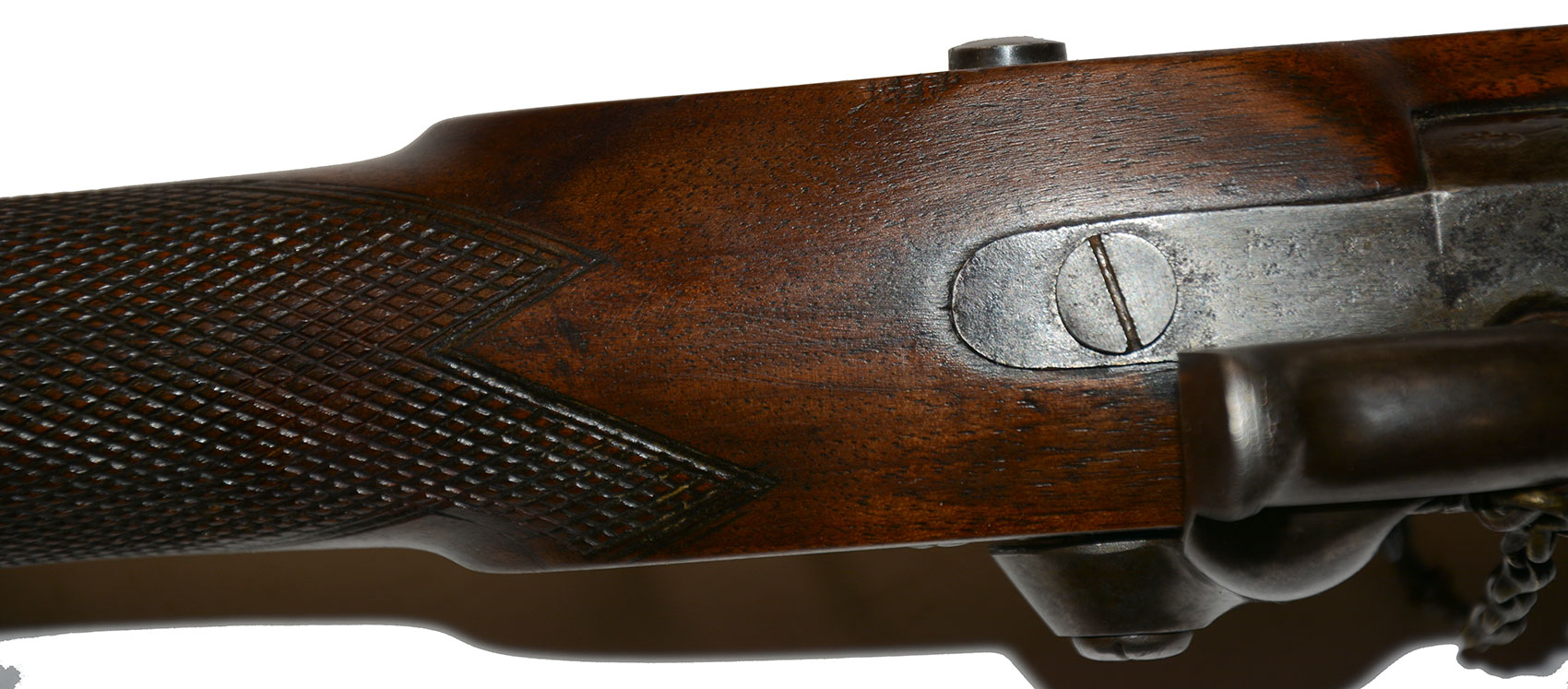
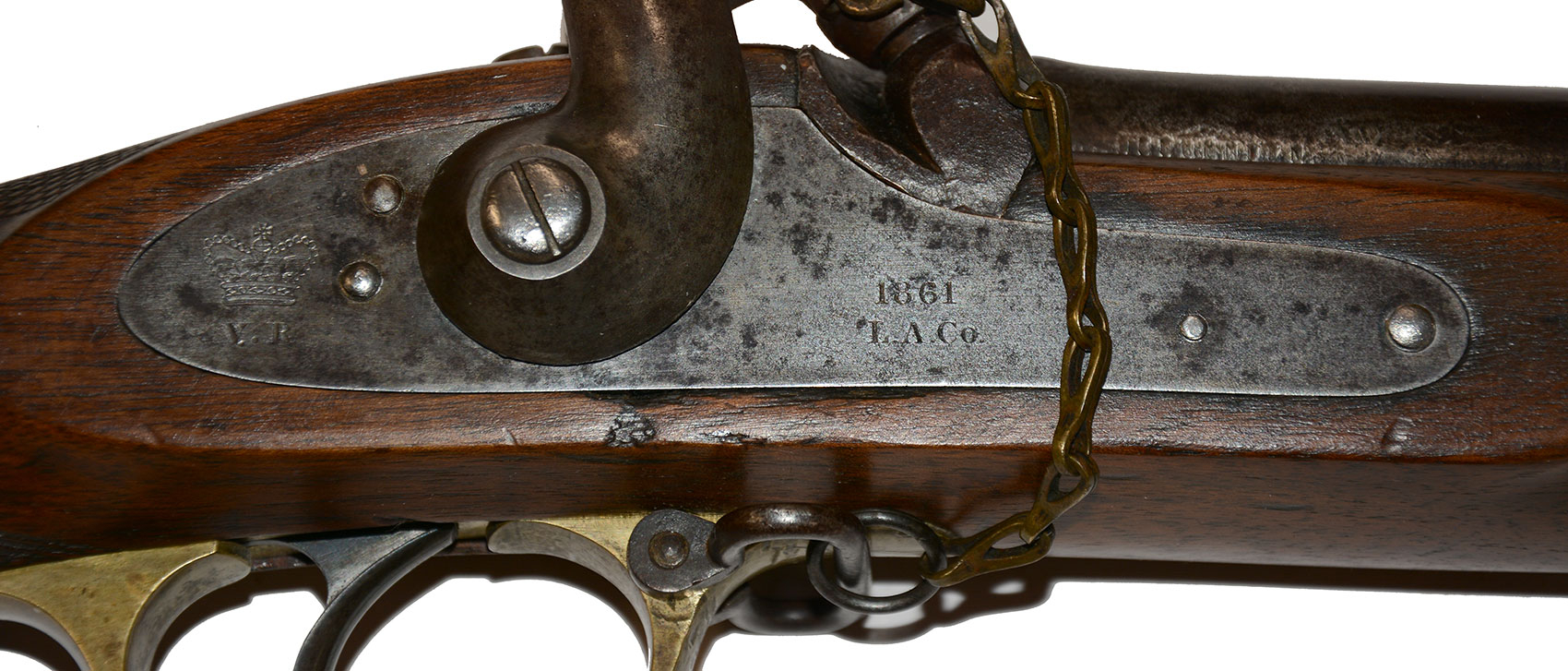


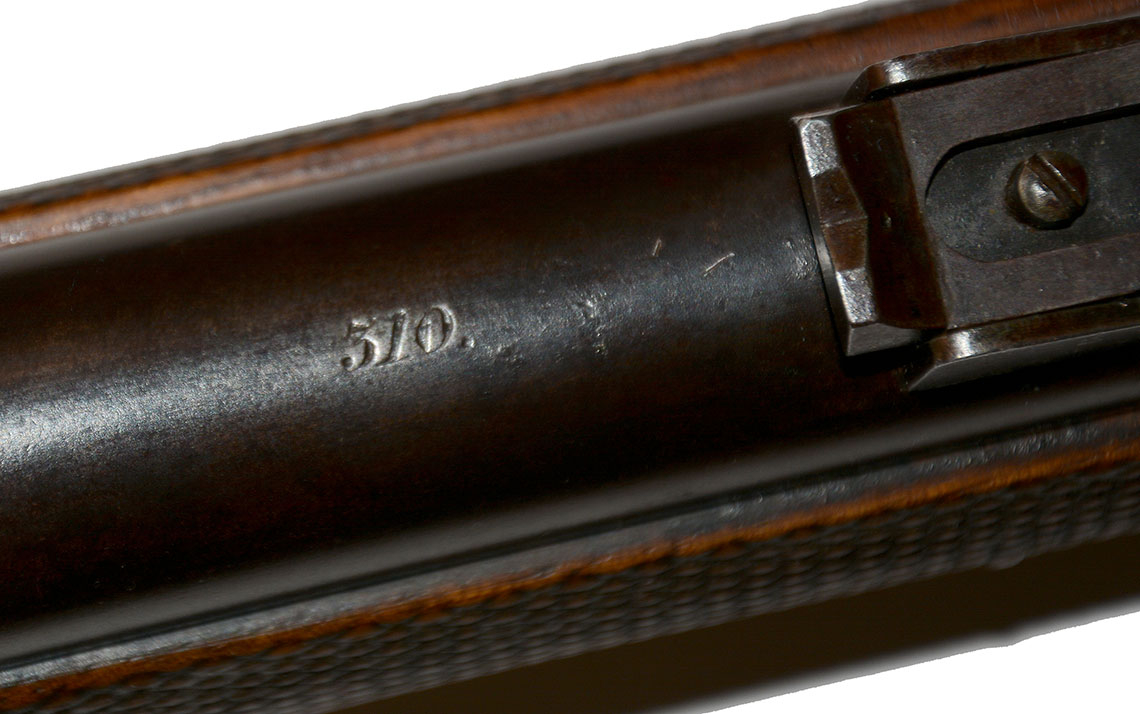
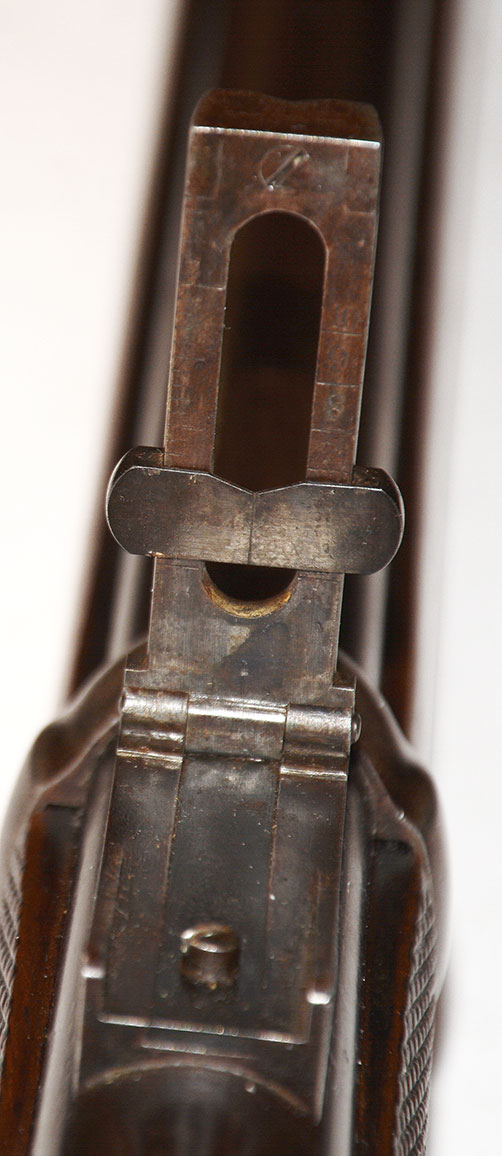
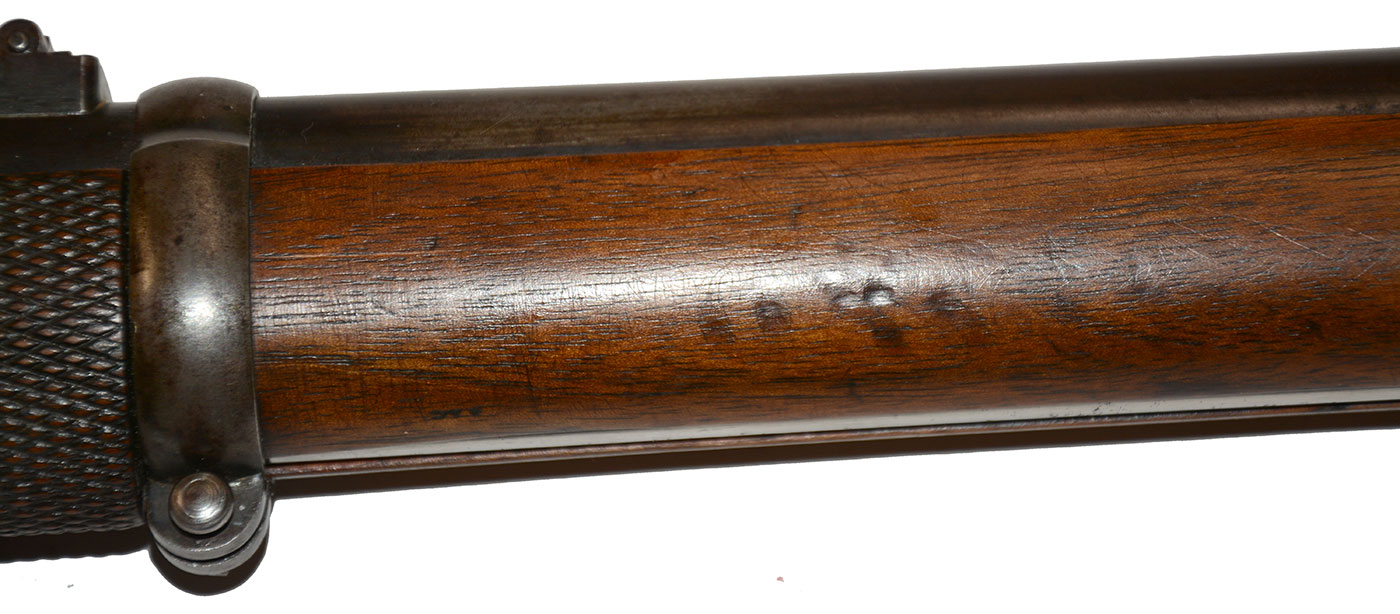
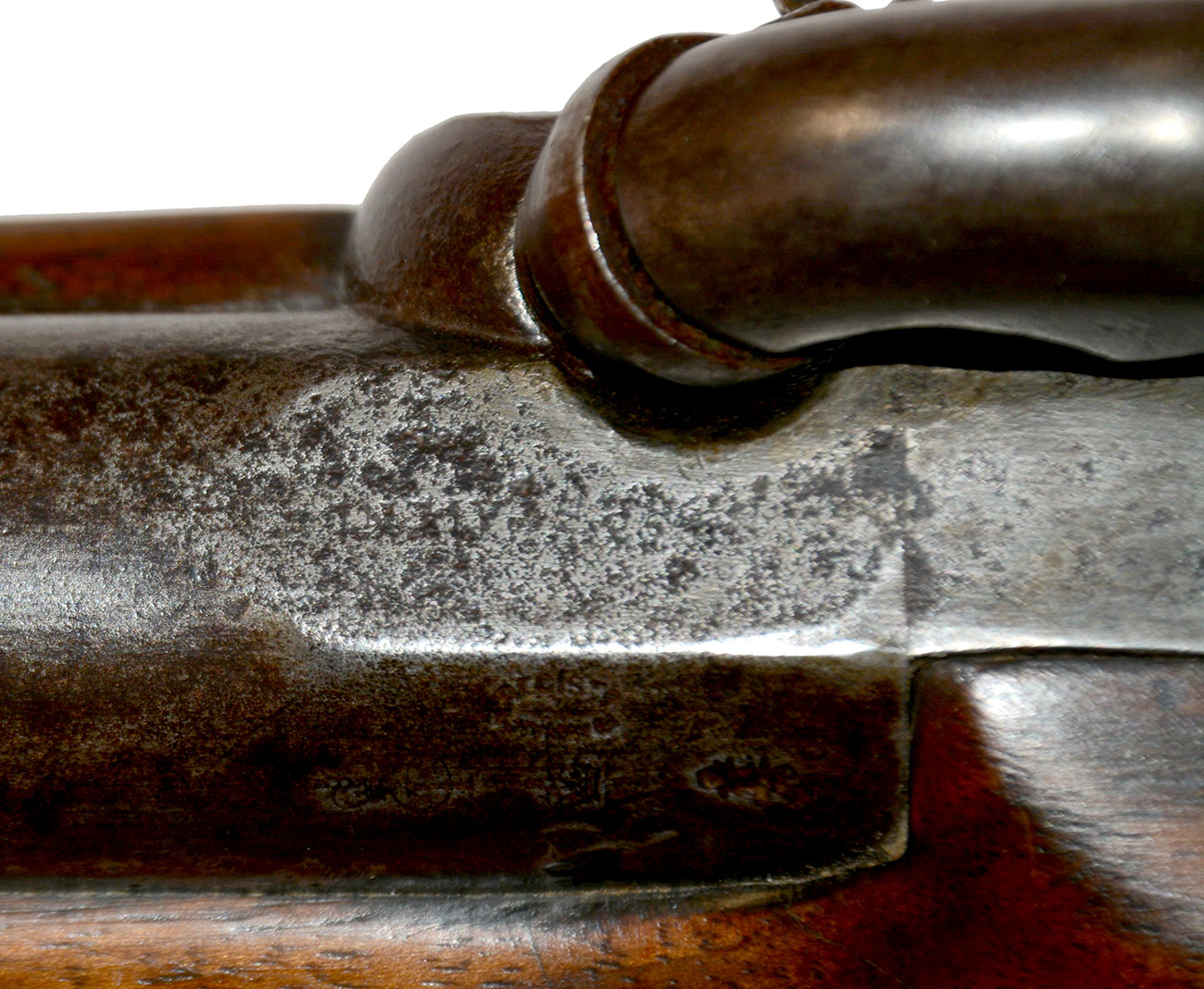
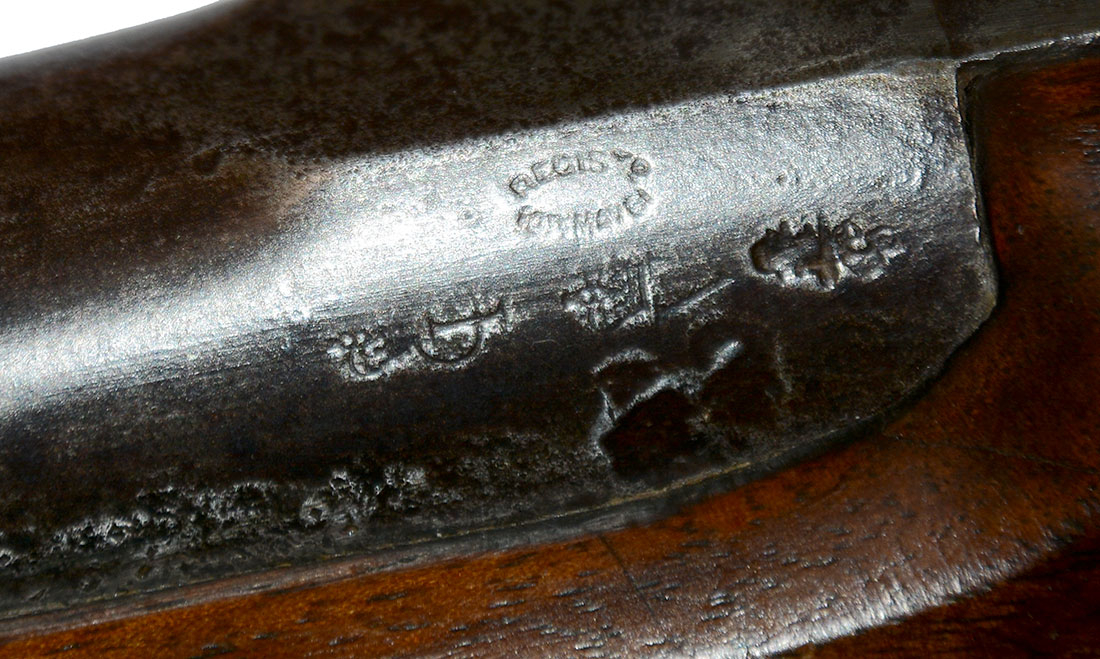
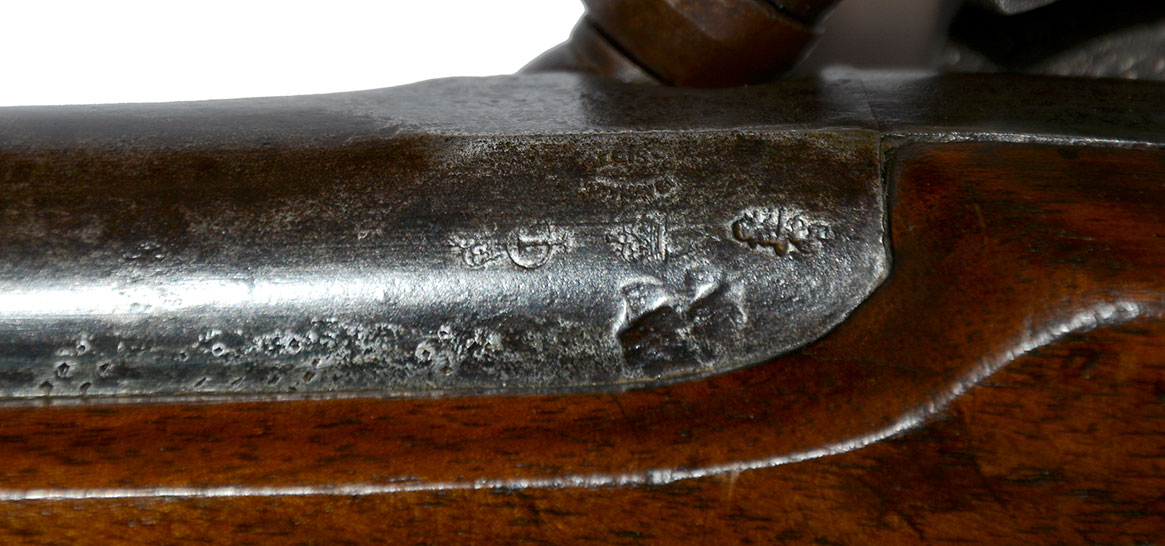
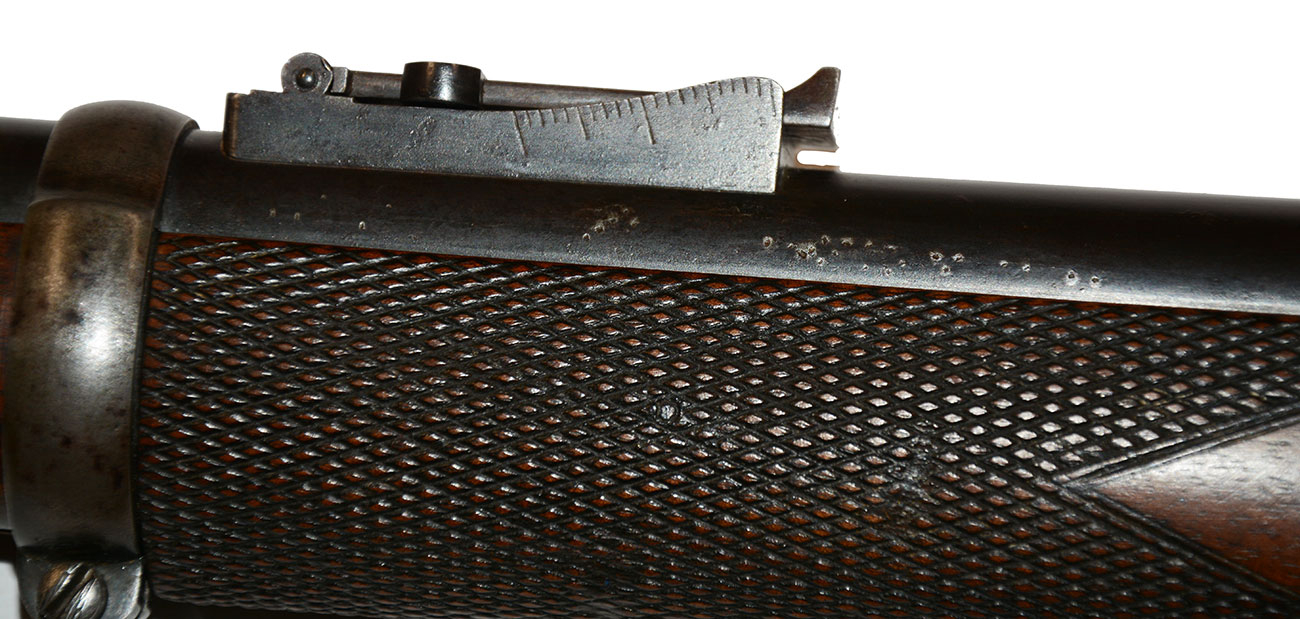
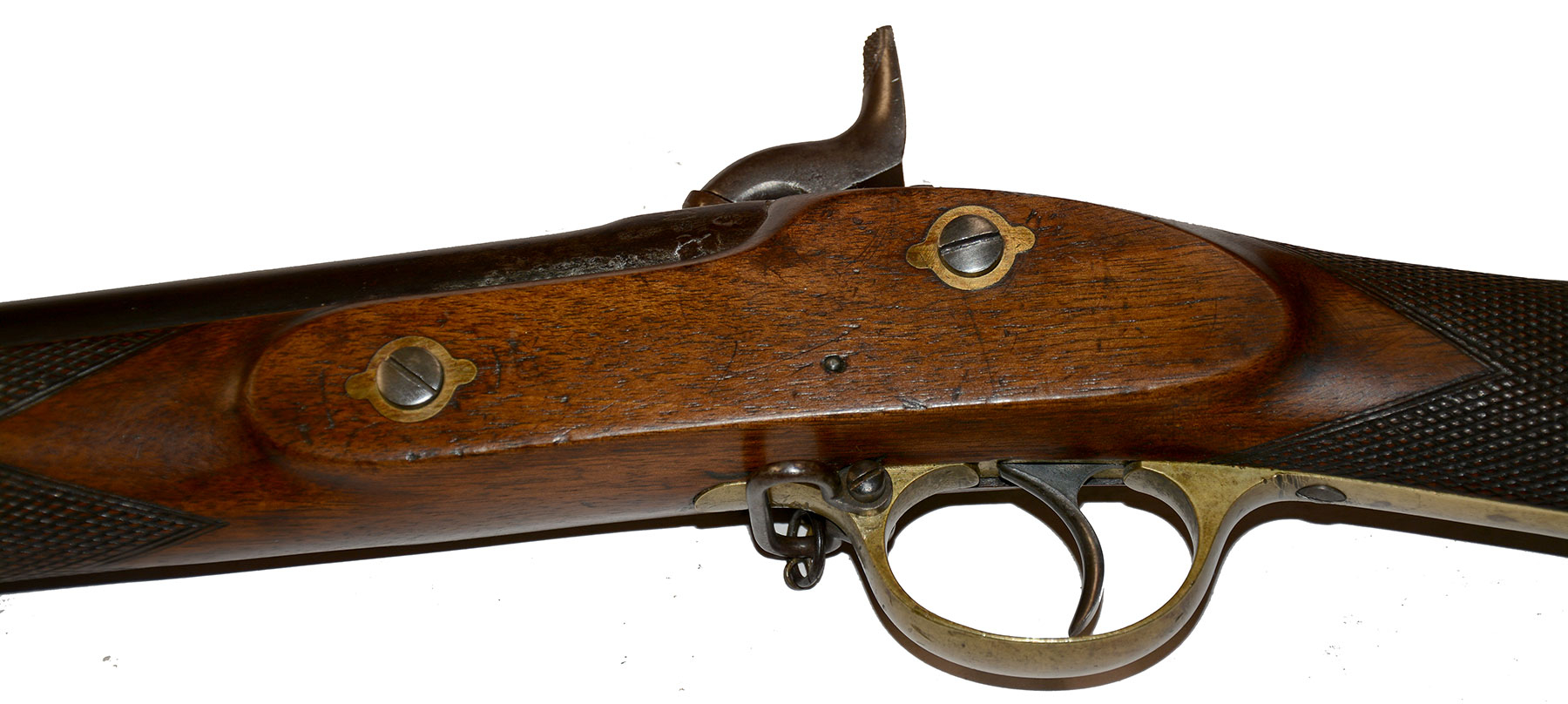
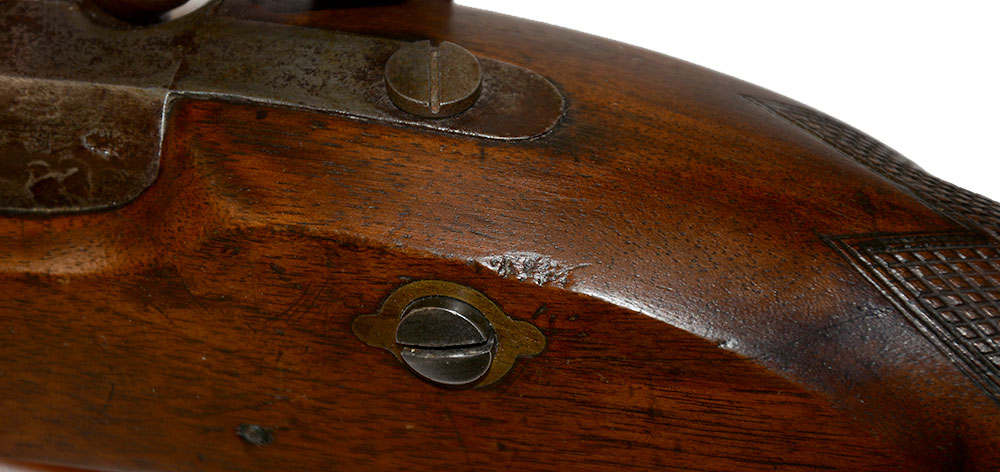
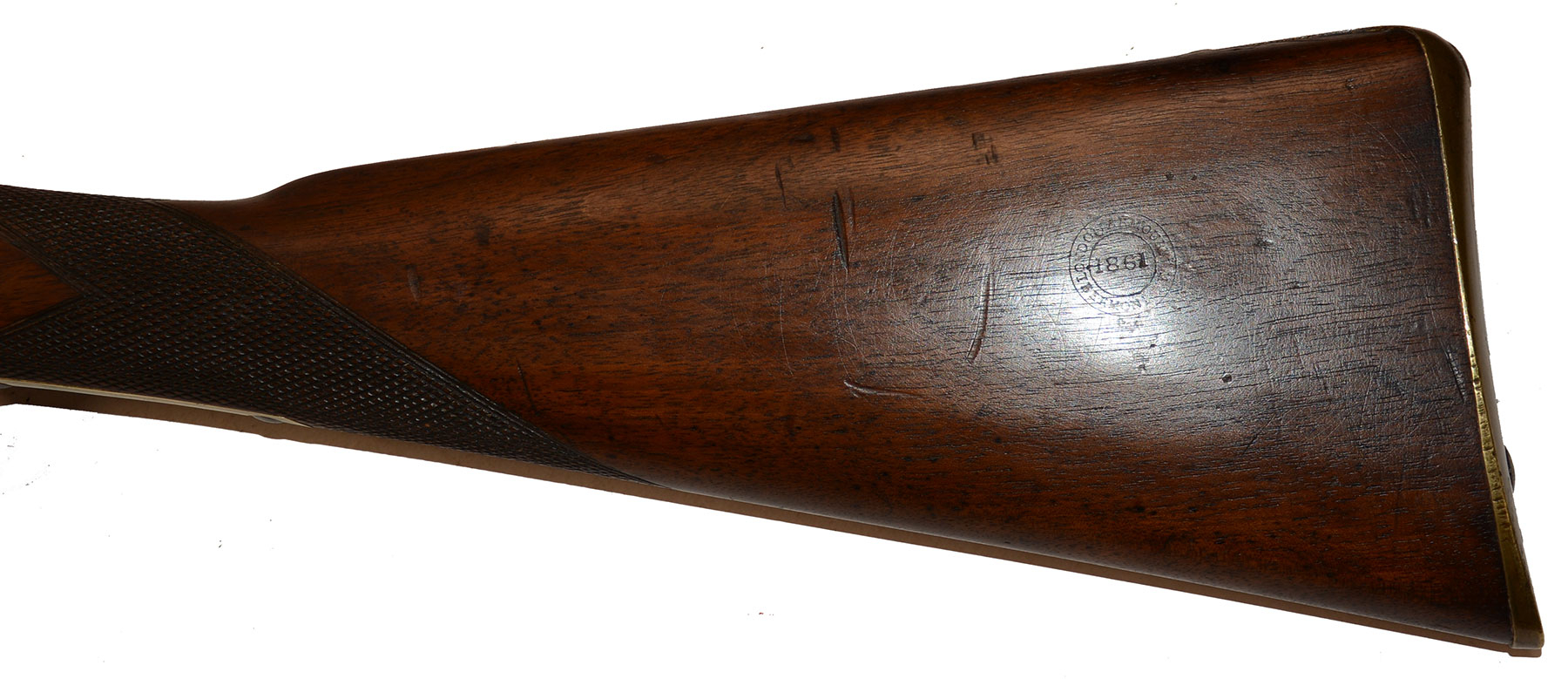
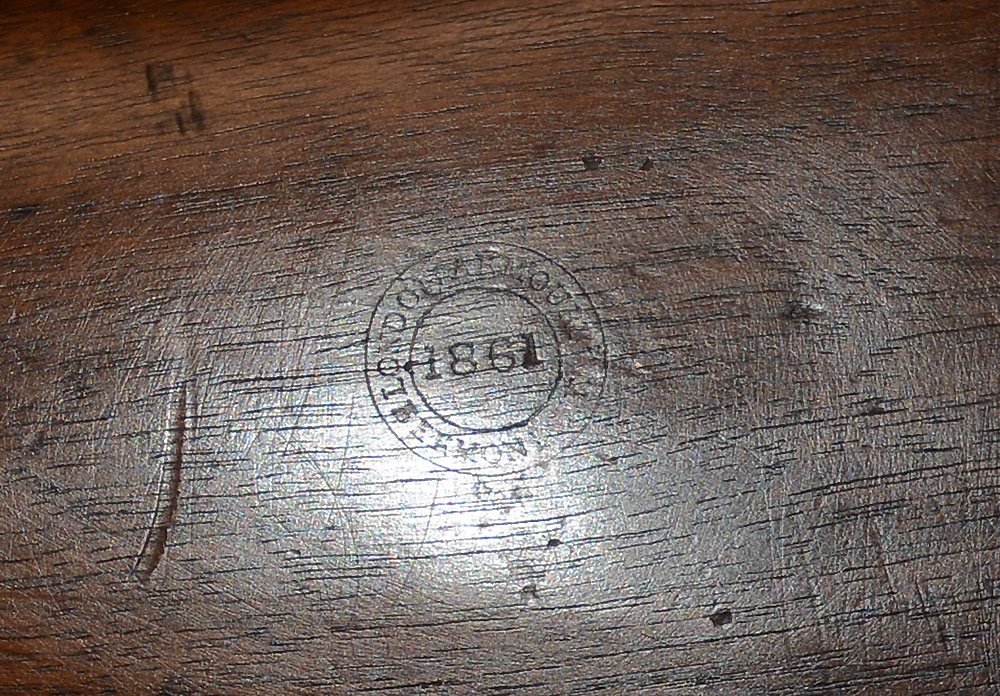

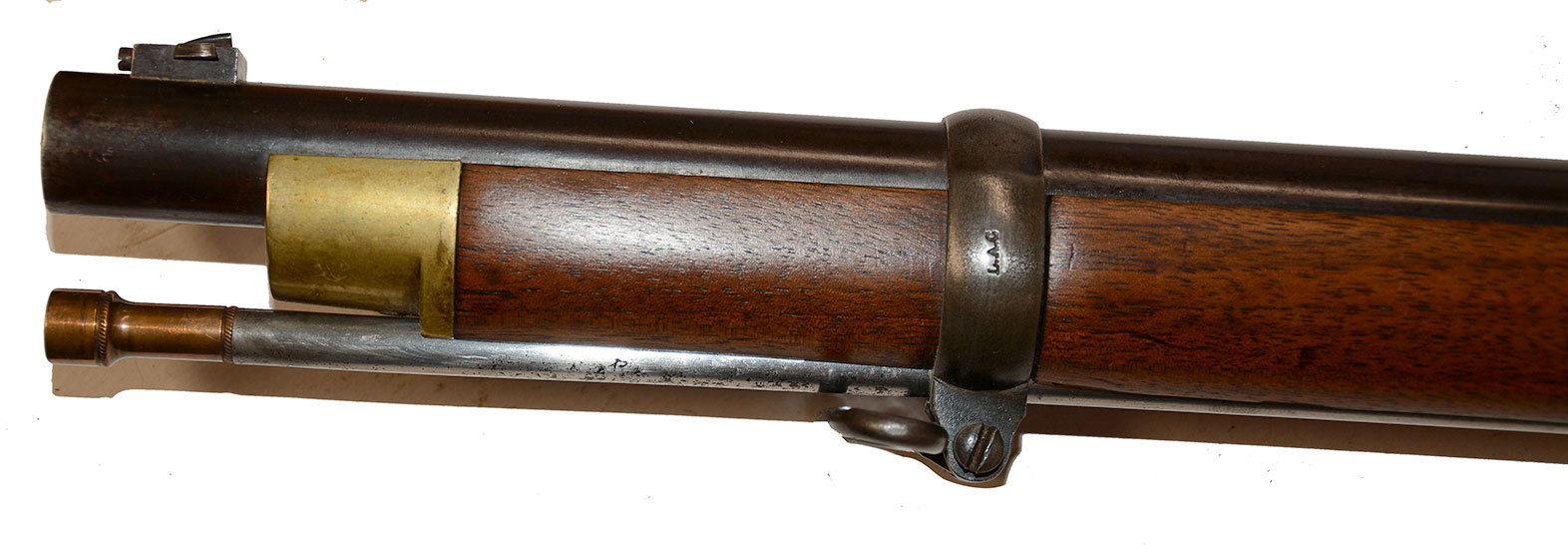
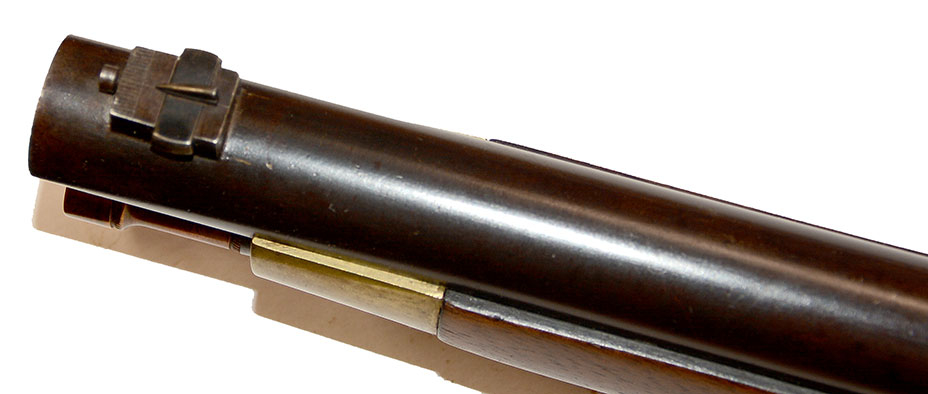
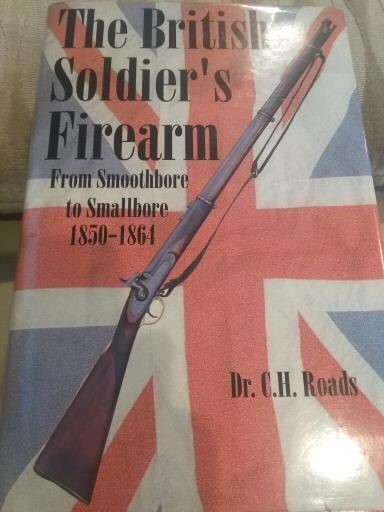
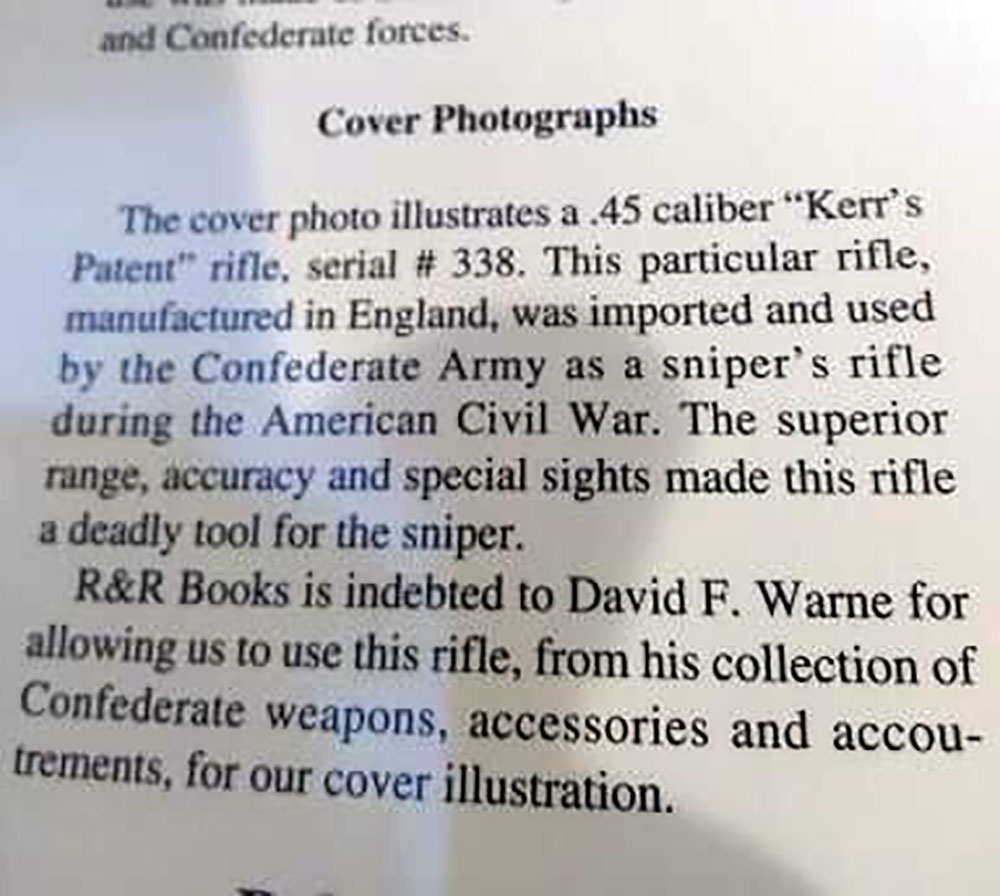
$15,750.00 SOLD
Quantity Available: None
Item Code: 88-161
Offered is a Kerr military sniper's rifle number 310 that has been in a world class Confederate arms collection. It is only 28 numbers from a known and documented Confederate Kerr number 338 which is illustrated on the dust cover of Dr. C. H. Roads' groundbreaking book The British Soldier's Firearm.
This is a true super accurate sniper's rifle not to be mistaken for a sharpshooter's weapon. "Sharpshooters" were actually skirmishers who proceeded the infantry attack; they were "feelers". Snipers stayed behind the advancing lines or stayed in fortified positions to "pick-off" select enemy officers for example or artillery personnel, caissons etc. These Kerr sniper rifles were designed about 1860 by James Kerr the superintendent of the London Armoury Company. On May 10, 1861, Kerr received English Patent #4348 for his unique rifling design. The small bore, .451 rifle had a 6-groove, 37” barrel that was slightly recessed at the muzzle to protect the rifling and to facilitate the loading of the paper cartridge. The overall length of the rifle was 53”, and it was stocked to within 1 ¼” of the muzzle, with no provision to mount a bayonet. All of these rifles were produced by the London Armoury Company, and it is believed that only about 800 of them were manufactured in total.
The arm was basically a standard London Armoury Pattern 1853 Enfield Rifle Musket, with an upgraded barrel and upgraded sights. The rifle was also one of the most accurate designs available during the early 1860s, challenged in its accuracy only by the Whitworth patent rifle, which sold for substantially more money. A Kerr rifle cost roughly twice what a standard Patten 1853 Enfield rifle musket did, but a Whitworth could cost as much as 20 times more than a Kerr Rifle! The Kerr Rifle was typically equipped with an upgraded and refined version of the standard “Enfield” type rear sight, and with a windage adjustable front sight.
The extreme accuracy of the rifles, their reasonable price (when compared to Whitworth Rifles) and the strong relationship between the London Armoury Company and the Confederacy resulted in a number of these special rifles being acquired by the south for use by their snipers. Many scholars believe that they, the Confederacy, obtained no more than sixty to eighty of them, but some experts believe the numbers were much higher. Perhaps as many as 200 from all sources including the Central Government, State Government and gifts from patriotic citizens.
A confirmed purchase, but maybe not the first, of Kerr Rifles by the Confederate central government was an order placed with Sinclair, Hamilton & Company in July of 1862 by Caleb Huse. It is important to remember that Archibald Hamilton, the principle in Sinclair, Hamilton & Company was also the Managing Director of the London Armoury Company. This order specifies: " 20 small bore rifles, best checkered stocks, brass mounts" .
The 20 Kerr Rifles from this order apparently ran the blockade sometime between the fall of 1862 and were eventually delivered to the Richmond Arsenal. It is not clear when the rifles were delivered, nor when they left England and when they arrived in the South. On November 16, 1863, Colonel Gorgas of the Confederate Ordnance Department Informed Lt. Colonel Hypolite Oladowski, Chief Ordnance Officer of the Army of Tennessee, that he had ordered the Richmond Arsenal to send 20 Kerr Rifles, complete with ammunition to the Army of Tennessee for the use of their sharpshooters. Lt. Col. Oladowski subsequently transferred 10 of these Kerr rifles to General Patrick R. Cleburne’s Division (Hardee’s Corps) at Tunnel Hill, Georgia on December 23, 1863, at the request of Captain Charles S. Hill, Ordnance Officer. Captain Hill officially confirmed the receipt of these rifles on December 24, 1863. No further documents have been uncovered relating to the field use of the remaining 10 brass mounted Kerr rifles, although it seems unlikely that these very important rifles and expensive rifle would languish in the Richmond Arsenal unnecessarily, when they certainly would have been put to good use in the field by Confederate marksmen.
An additional group of possibly iron mounted, rather than brass mounted Kerr Rifles has been documented in Confederate service, and these guns also saw service in the Western Theater with the Army of Tennessee. These 11 guns were a gift to General John Breckenridge from an “English Friend”. Breckenridge had formerly commanded the Kentucky “Orphan Brigade”, and he passed the guns directly to his old brigade. In April of 1864, a shooting contest was held by the brigade in Dalton, GA, and the two best shots from the 2nd, 4th, 5th, 6th and 9th Kentucky Infantry were issued these special rifles, with the 11th gun going to Lieutenant George Hector Burton who was placed in command of this elite "sharpshooting" unit. The Orphan Brigade was officially the 4th Brigade, First Division of General Hardee’s Corps at that time, so all currently known issues in the A of T of Kerr Rifles were to elements of Hardee’s Command. In June of 1864, Lt. Col. Oladowski submitted an Armament and Ammunition Report of the Army of Tennessee for the week ending on June 25. In the report, he noted: 29 ".44 caliber rifles". Whitworth Rifles are noted separately in this same report, which certainly suggests that these 29 rifles were in fact Kerr Patent Rifles.
In an August 4, 1864, Consolidated Armament and Ammunition Report, sent to Colonel Gorgas from Captain W. D. Humphries, Depot Ordnance Officer, East Point, Georgia, Army of Tennessee he states that: "We have in this army 38 Whitworth and Kerr Rifles which are the same caliber..." Additional Kerr rifle purchases are suggested by a report found within the Prize Court records of the United States District Court, Southern District of New York. The report relates to the capture of the blockade-runner Elizabeth. The vessel was captured while attempting to enter Charleston on May 29, 1862. Listed within the cargo of the ship were " 14 small caliber Enfield Muskets" “, which were probably Kerr Rifles.
It appears almost certain that other Kerr Rifles were acquired by Confederate speculators and were delivered to the Confederacy during the war. Reasonable deduction reveals that the 20 brass mounted rifles purchased by Caleb Huse would be dated either 1861 or 1862, while the Breckenridge guns could be dated as late as 1864. The captured guns from the blockade runner Elizabeth could only bear 1861 or 1862 dates this suggests that they were brass mounted as well. This would indicate that between 34 and 40 brass mounted Kerr rifles, at a minimum, were purchased and imported by the Confederacy. These brass mounted guns would all have been 1861 or 1862 dated.
The fire arm offered is a brass mounted, 1861 dated example that is the prototypical and most documentable version of the Confederate Kerr rifle purchases. The left side of the butt is marked with the London Armoury Company circular cartouche that reads: "London Armoury Bermondsey 1861". This location is unusual since the accepted place for this on all known British arms, for their use, was on the right side. The lock of the rifle is clearly marked with crown over "V.R." and "1861 L.A. Co." forward of the hammer. This is one of those “exception to the rule” situations where the presence of the “VR” under the crown does not rule out potential Confederate use. In fact, all known London Armoury long guns imported here during the war exhibit the crown over "VR"! Also, the British military never officially purchased Kerr London Armoury rifles. Nor were any officially acquired for their Colonies. The lock has a pleasing pewter-gray patina, with some mottled areas of darker age discoloration. It is mechanically excellent and functions perfectly on all positions. The tumbler incorporates a fly, typical of a high-quality target rifle lock. The interior of the lock is marked "L.A.C." which is also found on the bridle and interior of the hammer’s neck. The barrel is marked "Kerr's Patent" on the top of the breech, but this mark is largely illegible due to light erosive pitting from the percussion cap flash. The left breech of the barrel is marked "REG'D 10 May 1861" in a two-line oval cartouche. The left breech also bears the usual London commercial view, proof and definitive proof marks, but without the often-found external gauge mark. The serial number of the rifle, ''310" is engraved on the top of the barrel, behind the rear sight. As regard the numbering sequences only 800 Kerr rifles of all types were produced from deluxe match rifles to our no-frills military pattern. Numbering started at 1 and ended at 800. So, 309 may have been an extra special-order while example and 310 a bare bones military style. When the CS government put in their first order for 20 these chosen military style 20 could not be consecutively numbered. Nor would the dates have been all the same. The exterior of the barrel is very attractive with sections of original blue and mixed plum brown patina. There is some light to moderate flash pitting around the breech and bolster area, and this is the only area that shows any significant wear on the barrel. There are a couple of small patches of light surface oxidation present on the barrel, and some lightly scattered pinpricking, but no significant pitting or oxidation is present forward of the breech area. The barrel bands show a blue gray patina. The original brass nose cap is in place, and it shows none of the decorative engraving more often encountered on the “target grade” rifles. The trigger guard and butt plate are standard, military pattern brass parts without embellishment. The lack of decoration suggests military, rather than target use for the gun. All of the brass has a nice, mellow golden patina. The heads of the trigger guard and butt plate mounting screws are rounded, which is correct for a London Armoury produced long arm, and they retain traces of their blued finish. The bore of the rifle is in fine condition and is mostly bright. The original rear sight, complete with elevator, is in place behind the rearmost barrel band. The sight is correctly indexed on the “bottom” of the ladder, so the graduations face the shooter when the blade is lifted for long range shooting. The original windage adjustable front sight is in place as well, complete with the original tension screw. The original nipple protector and chain are attached. The original sling swivels are in place on the rifle. Both are military style loop swivels, with one on the upper barrel band lug and the typical swivel on the trigger guard bow. Again, these are features of a military rather than a sporting gun. All three bands are the correct Palmer Patent design, which was the only pattern in use during and prior to 1861. All three retain their original doughnut shaped, tension screw protectors. Its original and correct, bronze tipped Kerr rifle ramrod is in place in the channel under the barrel.
The stock of the rifle is in still relatively sharp and in fine condition as well. It is expertly checkered at the wrist and the fore-end and is very attractive to look at. The quality of the wood is very good, but not visibly better than the wood found on military rifles of the period. The stock does show a handful of minor bumps, dings and small mars, and the checkering shows some light wear. This smooth stock shows no abuse or damage, just the wear that is the result of real world carry and use. Most Kerr Rifles offered have a small German silver escutcheon set into the wrist of the stock for the owner’s initials. This gun does not have this feature, again a suggestion of military, rather than target use.
This is one has always been accepted as one of the rare Confederate used Kerr Rifles, its simple, military pattern configuration suggests it. And the weapon was found in the US in a very old collection. This brass mounted best quality rifle with a checkered stock and absent any special target shooting features, combined with military rather than sporting swivels, suggest it was probably one of the 20 guns purchased through Sinclair, Hamilton & Company early in the war. Only a handful of Kerr Rifles have sold or traded over the past 25 years, and very few could have potentially had any Confederate association due to their target rifle configurations. In 2009 a brass mounted Kerr dated 1863 in good condition but with an incorrect ramrod sold at RIA for $19,550. We are offering here one of the most coveted Confederate sniper rifles at a very reasonable price, and about 1/10th the price of a 2nd Quality scoped Confederate Whitworth Rifle. Our friend Corky Huey now deceased author of the seminal book "The British Connection" always claimed that these rifles were highly underrated and deserved the status and awe paid the Whitworth. We don’t know when another brass mounted 1861 dated Kerr Rifle (particularly of this quality) will surface again. This one has the look, the profile and the background to be Confederate and we are selling it as just that! [pe] [ph:L]
DISCLAIMER: All firearms are sold as collector's items only - we do not accept responsibility as to the shooting safety or reliability of any antique firearm. All firearms are described as accurately as possible, given the restraints of a catalog listing length. We want satisfied customers & often "under" describe the weapons. Any city or state regulations regarding owning antique firearms are the responsibility of the purchaser. All firearms are "mechanically perfect" unless noted, but again, are NOT warranted as safe to fire.
~~~~~~~~~~~~~~~~~~~~~~~~~~~~~~~~~~~
THIS ITEM, AS WITH ALL OTHER ITEMS AVAILABLE ON OUR WEB SITE,
MAY BE PURCHASED THROUGH OUR LAYAWAY PROGRAM.
CLICK HERE FOR OUR POLICIES AND TERMS.
THANK YOU!
Inquire About RARE CONFEDERATE GOVERNMENT IMPORTED KERR SNIPER'S RIFLE
Most Popular
Historical Firearms Stolen From The National Civil War Museum In Harrisburg, Pa »
Theft From Gravesite Of Gen. John Reynolds »
Selection Of Unframed Prints By Don Troiani »
Fine Condition Brass Infantry Bugle Insignia »
Large English Bowie Knife With Sheath 1870’S – 1880’S »
Imported (Clauberg) Us Model 1860 Light Cavalry Officer's Saber »
featured item
AN ASSEMBLAGE BOTH WAR AND POST WAR OF A GETTYSBURG "WOLVERINE” – WILLIAM H. DUNN, 5TH AND 10TH MICHIGAN CAVALRY
William H. Dunn of Ganges, Michigan served in both the 5th and 10th Michigan Cavalry during the Civil War. He enlisted on Aug. 14, 1862 in Co. "I" 5th Michigan Cavalry. At Gettysburg Dunn, a trooper in the famous charge lead by Custer, gallantly… (1268-779). Learn More »


